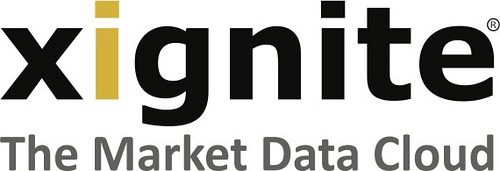Are companies like Xignite the key drivers of financial innovation?
Within minutes of his company’s keynote at FinDEVr this fall, Xignite founder and CEO, Stephane Dubois had already dropped the names of StockTwits, Personal Capital, and Robin Hood. All headline-grabbing fintech companies that have chosen Xignite to supply the crucial market data that makes their innovations work.
Sharing the stage with software engineer Anand Viswanathan, Dubois used a real stock purchase to take the us from financial social network to PFM/investment advisory to trading platform, connecting the dots of a real fintech ecosystem with Xignite at the center.
From Xignite’s perspective what makes them the resource of choice for so many innovative fintech startups is that Xignite understands two key things about innovation in a competitive technology marketplace. First, it doesn’t matter how good your product or service is if you can’t get it to market before your competitors. Second, don’t make developers spend any more time on the “financial market data piece” as Dubois calls it, than is absolutely necessary.
“Individual developers have an idea, a vision of building something unique,” Dubois explained.
“By creating something that developers can look at and say, ‘I can code this today’ it makes it easier for them to create and innovate,” Dubois said.
Ready, Set – Xignite!
It’s worth remembering that there was a time when getting access to market data itself was a challenge. “Historically sourcing and integrating market data has been very painful,” Dubois said from the stage at FinDEVr this fall. “It’s very complex area, its full of quirks and its littered with legacy technologies.” He recounted a story of Wealthfront founder Adam Rachleff, who became frustrated with legacy data providers, and decided instead to turn to Xignite for market data.
“We helped Andy build Wealthfront,” Dubois told developers. “And we can help you build your business.”
Founded in 2003 and headquartered in San Mateo, California, Xignite’s story has been about more than just building a better market data delivery mousetrap. By 2008, the media had begun to pick up on how,
in the words of TechCrunch’s Jeff Widman, Xignite was a “case study” in how a wide range of businesses – in this case Forbes.com – could take advantage of cloud-delivered data and free themselves from the costs and technology issues of legacy financial market data providers.
As Dubois explained in an
interview earlier this year, the previous generation of APIs assumed two things: slower networks than we have today, and applications that stored data. “Now the networks are faster and apps ask for data repeatedly rather than storing it,” he said.
This is what has allowed for “massive cloud ecosystems” such as Amazon Web Services, which Xignite leverages in order to support its own ecosystem of fintech builders and innovators.
Today Xignite offers a wide array of fintech solutions. Its Market Data Cloud provides real-time, historical, and reference financial data on instruments in all asset classes. Its Market Data Distribution solution is used by exchanges and vendors such as NASDAQ to provide transaction data especially through Xignite’s on-demand APIs. Large FIs can take advantage of Xignite’s Enterprise Data Distribution solution, which helps organizations clean up data redundancies, as well as provide data through a private, branded API catalog.
Xignite currently processes more than 15 billion API calls a month from more than 45 countries. Its FI partners include BlackRock, Charles Schwab, BNY Mellon, Natixis, and TD Ameritrade, and exchanges like the Nasdaq OMX and the NYSE both use Xignite to sell their data.
The Technology
Xignite calls itself a design company rather than a “market data” company. It’s another way of saying that in addition to accurately delivering data quickly, Xignite has to provide that data in ways that are easy for developers to deal with. “Market data is especially complex,” Dubois explained. “We demystify it so they can build apps super quickly. We also have everything they need in one place – a one-stop shop – and what they’ll need for tomorrow.”
Some of what makes Xignite help developers get their projects finished easier and to market faster may seem like minutiae to non-builders. But according to Vishwanathan, its the minutiae that matters. He points to the layout of Xignite’s Product Catalog, which offers “tons” of API operators for individual services such as Get GlobalDelayed Quote. This gives developers the maximum ways to get the data they need. The API test forms in Xignite APIs can be customized so that developers can see only the outputs they are interested in, and in-line documentation helps make sure that builders are know both exactly what they are getting and exactly how to integrate it into their projects.
Xignite and the Fintech Gold Rush
Dubois thinks we are living in a “fintech gold rush”. And as such its Xignite’s job to provide prospectors with the shovels, pans, and dredges. Newly queued up is
FactSet, which provides financial information and analytics to more than 50,000 customers via desktop analytics, mobile apps, and data feeds. Xignite announced earlier this month that its customers will have access to FactSet’s global fundamental market data via its APIs as early as Q4 of this year.
In making the announcement about FactSet, Dubois referred the challenge of “keep(ing) pace with innovation.” It’s a telling acknowledgement and heartening to hear for fans of the platform. After all, it was a change in the way that data moved and was used – from slow
er and locally stored to faster and distributed from the cloud – that helped give Xignite the advantage it has. It is impossible to know the next evolution in data, the form it takes or the way the apps of tomorrow will consume it. But in either event, it will be worth watching to see how Xignite grows and adapts to stay at the forefront of change.
What’s not likely to change any time soon, however, are the number of companies discovering providers like Xignite and deciding that cloud-based financial market data delivery is a better alternative.
“Whether you are a startup trying to topple the world order, or working for a large company and trying to hold on to what you’ve got, what you need is speed,” Dubois said. “We have the largest, fastest, most powerful set of RESTful APIs that will help developers get their products to market faster.”






 Temenos
Temenos 






















